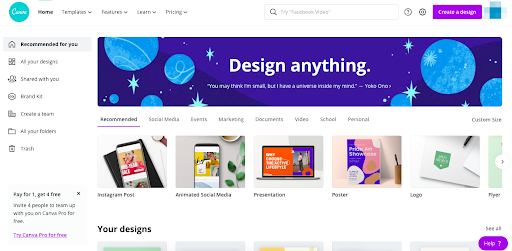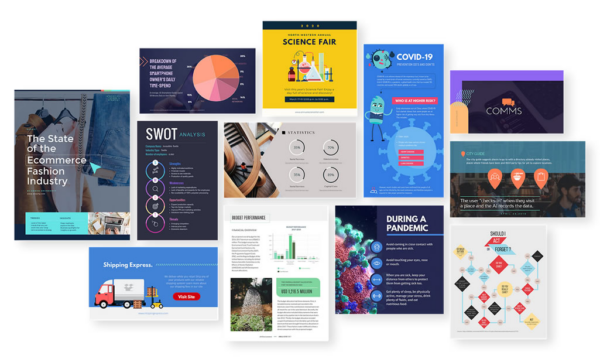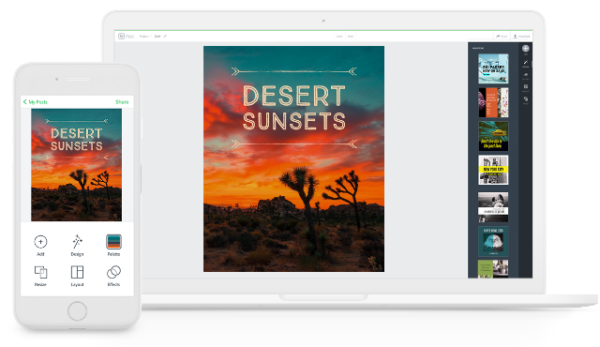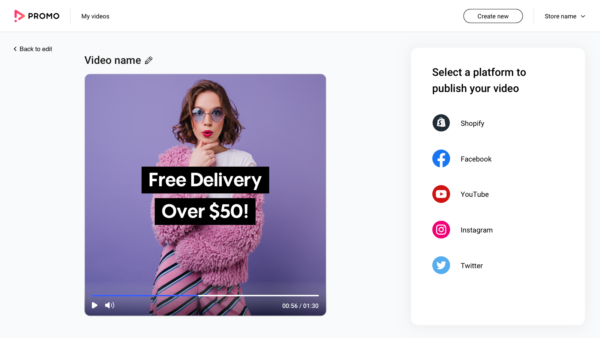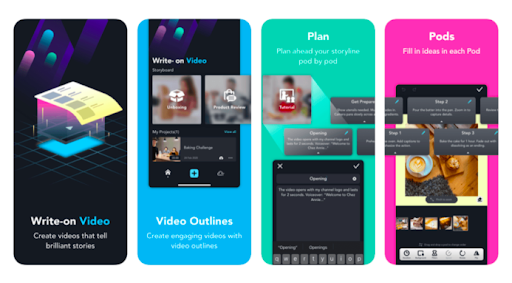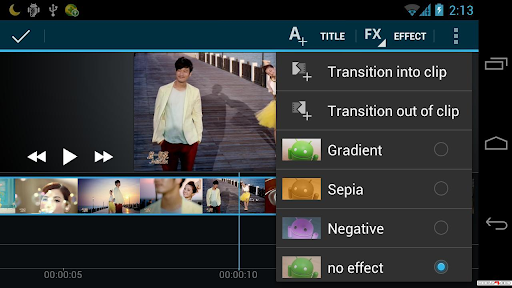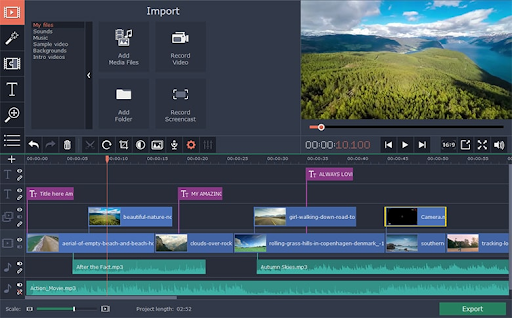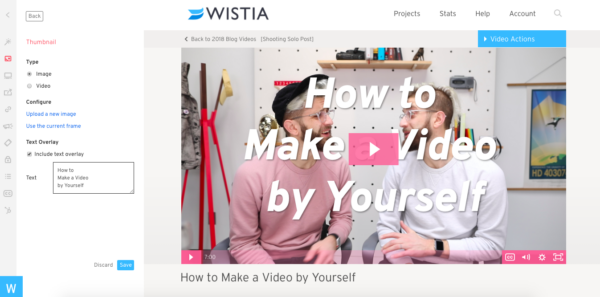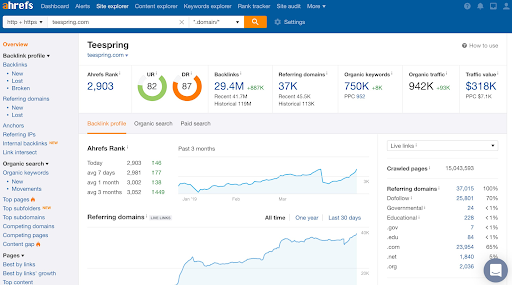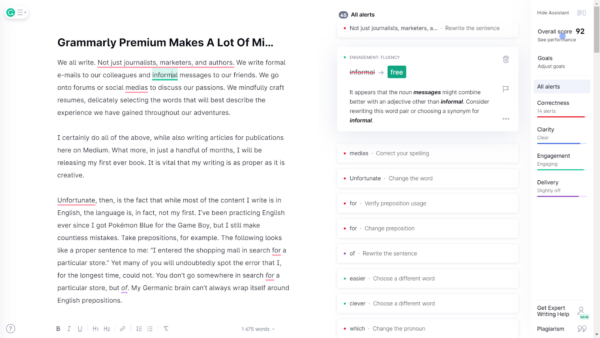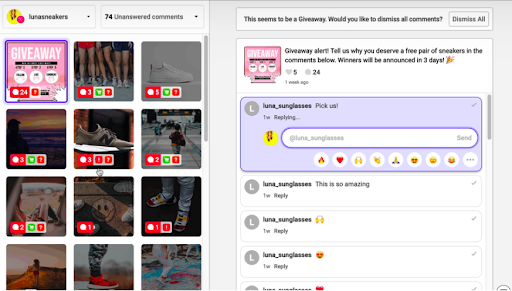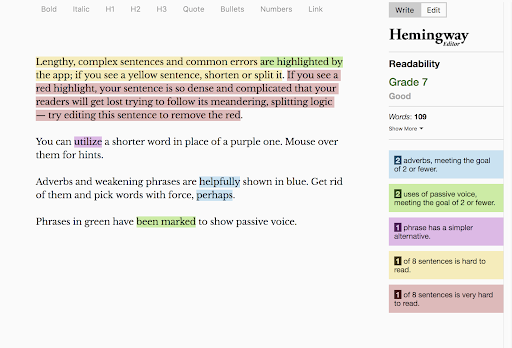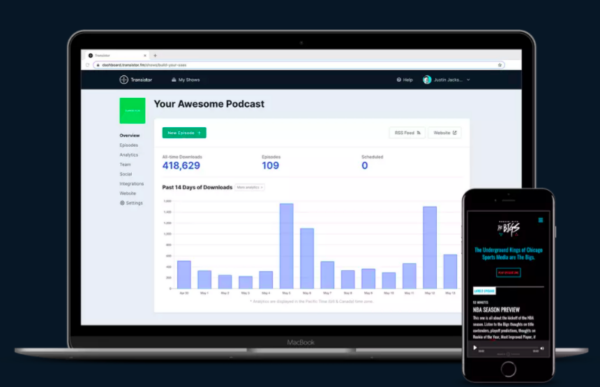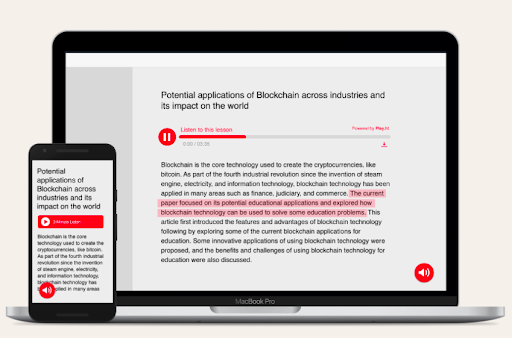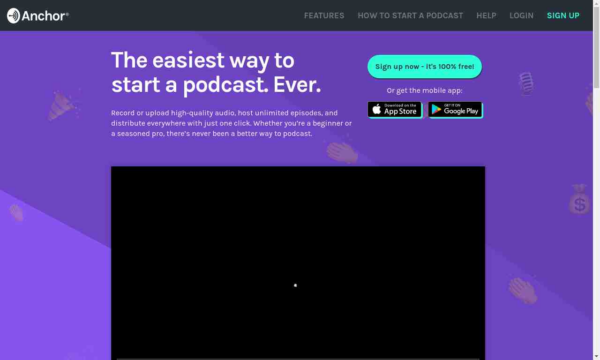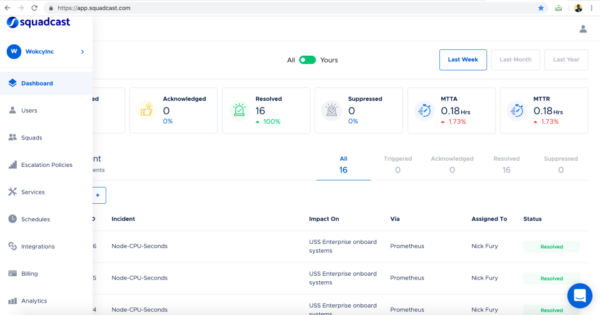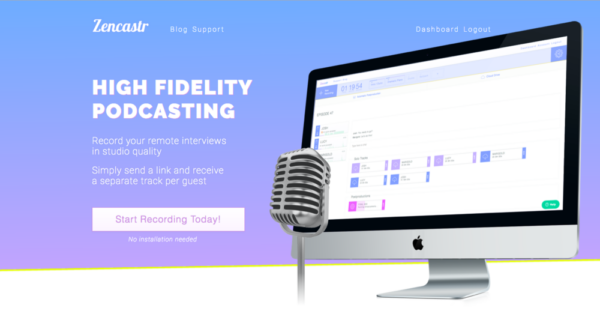What is content creation?
Content creation is the process of generating ideas for topics that appeal to your audience. It is creating written or visual content around those ideas and making that information available to your audience as a blog, video, infographic, or other formats.
Content creation usually involves:
- Setting measurable goals for your content
- Understanding how each piece of content fits into your wider marketing strategy
- Developing ideas to meet your goals through brainstorming
- Keyword research and competitor analysis
- Planning and producing top-notch content
- Ongoing optimization and improvement
- Measuring and analyzing the success of your content
When you approach content creation with goals in mind, you will be able to scale it up and gain a competitive advantage as a result of your work.
It’s all about developing content that has a purpose and understanding how you should set up every piece to make sure that it has measurable results.
The most important thing to know is that content creation is a process. If you can develop a solid content creation process, you will be set up to succeed.
What types of content are out there?
There are many kinds of content, including blogs, listicles, ebooks, infographics, videos, how-to guides, and case studies.
All these different content types are usually hosted online, either as part of a website, available for download or accessible as a reward for membership or signing up for a newsletter.
The content that you create is heavily tied to your business growth. Like all marketing pursuits, creating content that is well-planned, and well-executed that engage with your audience and creates a level of trust with them will directly affect your sales.
In order to get the most you can out of your content creation, you will know what kinds of content are popular and the ways that content is changing.
Content has recently seen a big shift from the entirely written, text-based content of the 20th century to the video and audio content that has overtaken today.
Podcasting in particular has exploded in popularity over the last few years. There are now more than 700,000 active podcasts, covering everything from business advice to pop culture to keep listeners engaged.
We’re also watching more videos than ever before.
In the United States, a whopping 85% of internet users watch some kind of video content every month, and 55% of users want to see more video content from the brands and businesses that they interact with on a regular basis. Video marketing also seems to offer a very strong return on investment.
Why is selecting the right tool important?
Creating content can help you to reach a new audience, convert an existing audience into customers, or encourage repeat custom. To create that content, you can use one of the many content creation tools out there to help you.
Choosing the right tool is important, as it can help you to make effective content. Tools can’t replace a strong content strategy, but they can help speed up the process, gain insights that you wouldn’t have otherwise had, and make better-performing content.
Content is no longer something that should just live on your business website. Your social channels are another powerful outlet to boost business growth and the content that you create for those channels will reach your audience in a more direct way.
If you get it right, the power of social content can help to turn your customers into brand evangelists. Happy customers are happy to shout about it on their own social channels, in much the same way that unhappy customers are.
How can you figure out which tool is right for you?
To choose the right tool for the job, you should first think about the kind of content that you want to create and consider what you want the content to achieve.
How much help do you need? For example, do you need a simple graphic design tool to make an infographic look neat, or do you need a tool that will guide you through creating a more complex visual? What’s your budget? Do you need a free tool, or can you afford to pay for a premium one?
The wrong tool could mean you end up paying for something that isn’t helpful, is too confusing, or isn’t useful enough for what you need to do – so choose carefully.
20 essential tools for content creation:
By using these tools, you can make content creation much easier and more straightforward. Many of these tools can also help you to measure the impact of the content that you have created.
The tools below are a mix of free, subscription, and paid models, and cover everything from visuals to podcasting tools. Here are some of the best tools for content creation out there.
Visual Content Creation Tools
Including visuals in your content can make it easier to read and more engaging to your readers. Creating visual content is one of the bigger challenges that marketers face if they don’t have access to a designer.
With these tools, you can create content that looks professional, without the cost of having to hire a professional designer.
Canva is one of the most popular design options available. It has a wide range of templates for everything from social graphics to infographics to help you create simple, creative visuals to boost your other content. A big advantage of Canva is that it is very easy to use, even for beginners.
There is a free and a premium version. The free version does have limited access to some of the graphics, and due to its popularity, it can be easy to accidentally use the same templates as a competitor. Whether you need great-looking Facebook adverts, or an infographic to include in a blog post, you can easily create it with Canva.
Visme is a cloud-based tool. There are templates for everything from simple branded visuals to fully interactive content. Your whole content creation process can be done in one place, making sure everything is unified.
There are millions of images and icons to choose from. Unfortunately, Visme has a free trial, but then must be subscribed to for full access. The costs are high for individual users, and some have complained about the lack of ability to export animations.
Vectornator allows you to create sophisticated illustrations, beautiful interface designs, and layouts all in one tool. Vectornator is free to use and has very detailed resources to help its users. It’s perfect for custom illustrations and layouts, print, and UI design. There is also a library of over 80,000 free icons available with Iconator, an icons library within the app.
Adobe Spark is an integrated suite of content creation applications for mobile and web, composed of Spark Page, Spark Post, and Spark Video. It can be used for social graphics, web pages, and short videos.
Your creations can be shared instantly, and the availability on both web and mobile makes it easy to work wherever you are. However, the free version of the tool is very basic, and you will need to pay to access the majority of the features.
Place It has lots of templates for mockups, logos, design templates, text animations, Instagram stories, flyers, and more. It has the largest library of mockups on the internet, and also offers the easiest way to make up mockups. You drop your design, and the mockup is generated for you.
The free version is limited, and you will have to pay for unlimited access.
Video Content Creation Tools
Video is one of the most engaging formats of content there is that you can share on social platforms. However, the problem for many who want to create video is the investment that is often needed in order to produce professional-quality video assets.
These tools can help you to create great-looking, engaging videos. While there is no real stand-in for a professional making your videos, these tools can be used to create video content that captures your audience at a fraction of the cost.
Promo offers the tools and content from creating video clips. It has a library of over 12 million clips and templates, that can be edited with licensed music, text, and logos. Promo has both free and paid versions.
Promo has some of the best training available, with live online training, webinars, and training documents. As with other popular tools, there is a risk of using the same popular templates that everyone else is using.
Write-on Video is a video editing app for adding text, stickers, audio recordings, and drawings to videos. You can create and edit videos, work on scripts, and annotate storyboards. The tool is simple to use but powerful. It’s great for on-the-go editing, quick video content creation, and uploading to video hosting and social media platforms with direct exporting.
Magisto is an intuitive tool for quickly creating video content. It’s easy to move elements around with a drag and drop format.
Detailed guides make it easy to create your first videos. One of the only drawbacks is that you will need a good, reliable internet connection to use this tool. Some users have also complained about slow response from customer service.
Movavi Video Editor Plus gives your the features of a standard Video Editor, as well as some additional functionality. You can create stylish movies from videos and photos by adding titles, filters, transitions, and special effects.
Movavi has lots of sample videos, clips, stickers, and music for you to use in an extensive library, and allows you to use as many tracks as you need with the multitrack timeline. Some find Movavi is quite simple, making it better for beginners than more professional users. Editing tools to improve video quality are also limited.
Wistia is software designed to help you get more from your content, whether you want to grow your email list or create smarter ads. It will also help you to track the impact of your video across your site and social channels.
Wistia has advanced marketing tools built-in, offering a better experience for your business and audience.
The free plan will only let you edit three videos, whereas the premium plan is one of the most expensive out there at $999 a month. It can also be hard to embed Wistia videos on other platforms, rather than YouTube or Vimeo videos.
Content Writing/Publishing Tools
When most of us think about content creation, we almost always go straight to thinking and talking about written content. Other formats are an impactful way to use content to drive marketing results, but written content is still the default format for a lot of businesses.
With that in mind, it’s important to get it right, and these tools can help you do that. For tools to help you create written content, you should use a mix of options to help you with keyword research, correct spelling and grammar while you write, and link-building and distribution after you’ve finished writing.
BuzzSumo is a powerful tool that analyzes thousands of pieces of content to give comprehensive data to the business using it. You can use it to get valuable insight into what content is working, and why, as well as which influencers could help you to amplify it.
This means that you can see what kind of content is working best for you, so you can create more of the same kind of thing. By identifying the right influencers, you can find the right people to help you get your content seen by more people and drive more traffic to your website.
A free trial is available, but after the trial period is up, there is no free version of BuzzSumo. The price could be a little steep for new or smaller companies. It also lacks data for new sites, which can make keyword research difficult.
This tool is an all-in-one SEO toolset, that can be used to help with competitor research, link building, keyword research, website audits, content research, rank tracking, and mentions monitoring.
The database has 8 billion keywords and 421 billion indexed pages, for maximum data accuracy. A big advantage is the free lifetime plan, although paid versions are available too. However, access to some tools is limited on cheaper plans. The sheer volume of tools can be overwhelming for those new to SEO.
The tool helps you to improve your communication. It offers detailed suggestions in real-time to improve word choice, tone, and grammar. You can use Grammarly for emails, articles, or anything else you’re writing.
Use the tool to add polish and professionalism. The free version is very good, although, for full access, you do need to pay. It can be slow to read at times, depending on where you’re using it, and contextual understanding is not always correct.
Buffer is an intuitive platform for managing social media, used to drive engagement and results. Their suite of products can be used for publishing, engagement, analytics, and team collaboration.
A free version is a solid option, but if you need more social accounts linked to the tool, prices change depending on the size of the business you are. One downside is the lack of integration with Instagram.
This free tool makes your writing clear, and more readable. Run your copy through the web app, and within seconds, you will see suggestions to shorten sentences and make your writing better for your readers.
Being free is a big advantage, but unfortunately, there are no widgets available for use on Chrome or Safari, which other similar tools have.
Podcast Tools
Podcasting has surged in popularity by a huge amount over the last few years, especially among those who are marketing B2B.
With this surge in popularity, it’s never been easier to create a podcast yourself and generate some major engagement. Having the right tools can really help you to maximize this channel.
Many businesses overlook audio as a tool, so by starting a podcast, you can edge ahead of your competition. Use tools to make recording interviews easier, distribute your episodes on different platforms with minimal effort, and track analytics to monitor your growth and success.
This simple, modern tool offers podcast hosting and analytics. Just record your audio, upload it to Transistor, and it will help you to distribute your podcast to Apple Podcasts, Spotify, and Google Podcasts.
A free trial is available, so you can try the tool to see if it works for you and your podcast.
Narrowing down analytics to a set time period can be more complicated, which is not ideal for podcasts with a lot of episodes. The built-in website builder is useful but can be difficult to get to grips with.
This is an AI voice generator and text-to-speech software. Generate realistic speech from text using the best text-to-speech voices from Google, Amazon, IBM, and Microsoft. Being able to convert text to audio can improve engagement, accessibility, and SEO.
There are currently over 260 voices and 55 languages available. However, some users find it buggy and it’s not easy to correct errors.
Anchor makes it easy for anyone to start a podcast through their award-winning apps for iOS, Android, and the web. It offers easy-to-use tools, straightforward analytics, one-touch distribution, and unlimited podcast hosting that is totally free.
Regardless of experience, Anchor is easy to use. Some users report occasional connection issues, and only minimal metrics are available, but this a very complete tool considering that it is free of charge.
With Squadcast, you can record studio-quality podcasts from anywhere, You can record remotely, with simple editing, to create engaging podcasts and videos. The intuitive platform lets you connect with anyone, anywhere. You can test the service with a 7-day free trial, although there is a cost after that.
However, even at the top tier, only 25 hours of audio recording is available per month, which is not enough for larger podcasts who record well in advance. Automatic backup is a big advantage, as your audio will always be safe.
Zencastr is a modern, web-based tool for producing high-quality podcasts. With a suite of fully-featured professional tools, this tool lets podcast producers quickly and easily record their guests over the web at studio quality.
Editing is made easy with separate mp3 files for guest recordings. Some users report that it is not that easy to test levels until the audio has already been exported. Zencastr also can’t be used on Safari.
While tools shouldn’t and won’t ever replace actual content creation skills, they can absolutely help you to take your content to the next level.
Conclusion
All these tools should be used to help you to gain the insights that you need to plan better pieces of content, create better visuals, or try out new formats of content.
The best content strategies ought to balance different types of content with a mix of tactics for promotion and distribution.
If you know the right tools and resources to use, you can create user-focused content that drives success. This is the first step to giving yourself an advantage over your competition.
Don’t forget that you can also use one piece of content across multiple platforms by adapting it into a different format.
For example, if you have written a blog post that has generated a lot of website traffic for you, then you know this is something that your audience is interested in.
You could take this blog post and use it as the basis for an episode of your podcast, or expand it into a series of longer posts that could be collated into an ebook.
This list of content creation tools could easily have listed hundreds of tools and resources, but these are some of the best for you to try. Test out the tools that match your needs with their free trials and see which deliver the best results for you and your content strategy.
